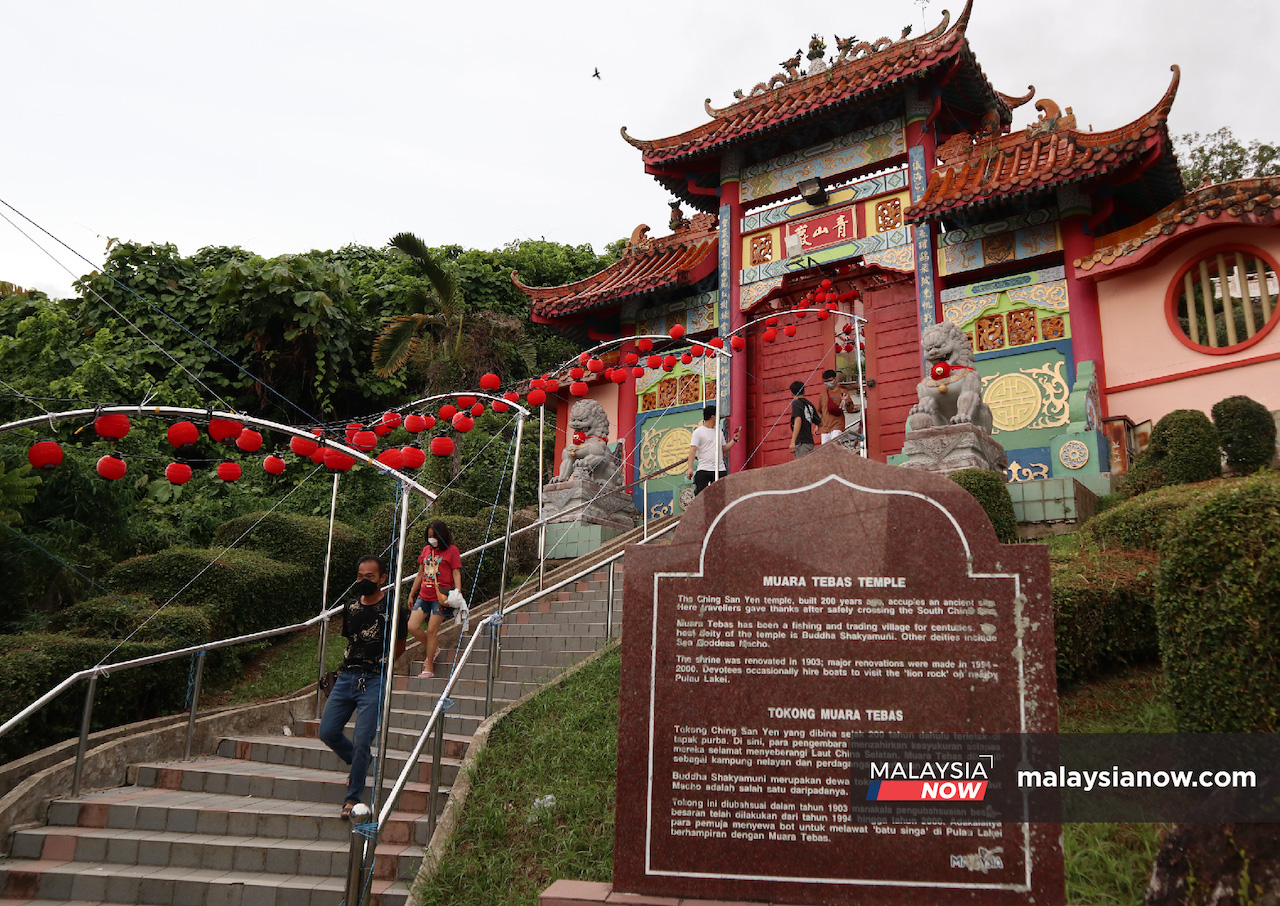At Sarawak temple, Malay father and son serve up vegetarian meals for CNY
For 20 years, Sapiee and his son Firdaus have spent Chinese New Year in the temple kitchen.
Just In
Every Chinese New Year, Buddhist residents at the primarily Malay fishing village of Kampung Muara Tebas along Sungai Sarawak make their way to the Ching San Yen Temple to perform their prayers for the year ahead.
The temple, a majestic building located on a hilltop 120 feet above sea level, normally draws visitors and tourists from near and far.
After performing their prayers, they enjoy a delicious vegetarian meal which is also in keeping with the Chinese tradition of going meatless on the first day of the New Year.
Behind the scenes in the temple kitchen, villagers are busy at work chopping vegetables and preparing the food to be served to those outside.
Among them are Firdaus and his father, Sapiee, who have spent 20 years now making vegetarian food at the temple alongside their Chinese friends.
Throughout the two weeks of festivities, they spend long hours each day preparing the food and packing it in containers to be given to the devotees who come to pray. Firdaus works at the back while Sapiee handles the cooking.
From dumplings to dessert, he takes care of the entire menu with help from the other villagers on particularly busy days.

For father and son, work begins before sunrise and ends late in the day. They usually earn about RM1,200 from the temple for each occasion.
This is a huge amount of money for Sapiee, one of many low-income parents who live in the fishing village.
Before the onset of Covid-19, the temple itself would make up to RM50,000 in parking fees, charging RM5 per car which would be given back to the village committee.
“On the first and 15th days, the worshippers hold a lot of prayers,” Joli Kadir, another villager, told MalaysiaNow.
“So we, the Malay folks, help carry the joss sticks and the food from the temple to the foothills.”

Two days a month, every month, meanwhile, hundreds of thousands of devotees, some from other countries, would come to the temple to pray.
On such occasions, the village committee would work with the temple management to streamline arrangements to welcome them in.
But while Covid-19 has changed many things for the village community, others remain the same. For as long as they can remember, they have lived side by side in peace and harmony despite their differences in race and religion.
The temple itself is seen as a symbol of this harmony, perched on top of the hill, flanked on the left by the Muslim cemetery and on the right at the foot of the hill by the mosque. Not too far away lies the Chinese cemetery.
To facilitate access to the Muslim cemetery, the temple committee built a footpath and opened part of its fencing to make a gateway for the villagers.
“To go to the Muslim cemetery, we have to pass through the temple,” Joli said.
“For us, there is no issue.”
Subscribe to our newsletter
To be updated with all the latest news and analyses daily.



